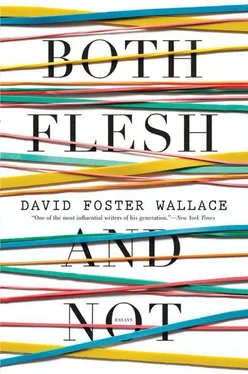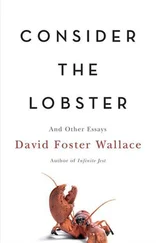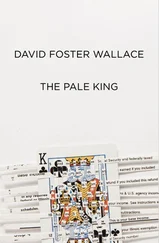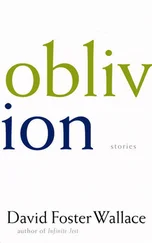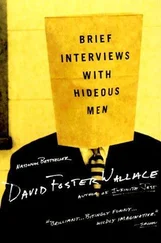The metaphysical explanation is that Roger Federer is one of those rare, preternatural athletes who appear to be exempt, at least in part, from certain physical laws. Good analogs here include Michael Jordan, 7who could not only jump inhumanly high but actually hang there a beat or two longer than gravity allows, and Muhammad Ali, who really could “float” across the canvas and land two or three jabs in the clock-time required for one. There are probably a half-dozen other examples since 1960. And Roger Federer is of this type — a type that one could call genius, or mutant, or avatar. He is never hurried or off-balance. The approaching ball hangs, for him, a split-second longer than it ought to. His movements are lithe rather than athletic. Like Ali, Jordan, Maradona, and Gretzky, he seems both less and more substantial than the men he faces. Particularly in the all-white that Wimbledon enjoys getting away with still requiring, he looks like what he may well (I think) be: a creature whose body is both flesh and, somehow, light.
This thing about the ball cooperatively hanging there, slowing down, as if susceptible to the Swiss’s will — there’s real metaphysical truth here. And in the following anecdote. After a July 7 semifinal in which Federer destroyed Jonas Bjorkman — not just beat him, destroyed him — and just before a requisite post-match news conference in which Bjorkman, who’s friendly with Federer, says he was pleased to “have the best seat in the house” to watch the Swiss “play the nearest to perfection you can play tennis,” Federer and Bjorkman are evidently chatting and joking around, and Bjorkman asks him just how unnaturally big the ball was looking to him out there, and Federer confirms that it was “like a bowling ball or basketball.” He means it just as a bantery, modest way to make Bjorkman feel better, to confirm that he’s surprised by how unusually well he played today; but he’s also revealing something about what tennis is like for him. Imagine that you’re a person with preternaturally good reflexes and coordination and speed, and that you’re playing high-level tennis. Your experience, in play, will not be that you possess phenomenal reflexes and speed; rather, it will seem to you that the tennis ball is quite large and slow-moving, and that you always have plenty of time to hit it. That is, you won’t experience anything like the (empirically real) quickness and skill that the live audience, watching tennis balls move so fast they hiss and blur, will attribute to you. 8
Velocity’s just one part of it. Now we’re getting technical. Tennis is often called a game of inches, but the cliché is mostly referring to where a shot lands. In terms of a player’s hitting an incoming ball, tennis is actually more a game of micrometers: vanishingly tiny changes around the moment of impact will have large effects on how and where the ball travels. The same principle explains why even the smallest imprecision in aiming a rifle will still cause a miss if the target’s far enough away.
By way of illustration, let’s slow things way down. Imagine that you, a tennis player, are standing just behind your deuce corner’s baseline. A ball is served to your forehand — you pivot (or rotate) so that your side is to the ball’s incoming path and start to take your racket back for the forehand return. Keep visualizing up to where you’re about halfway into the stroke’s forward motion; the incoming ball is now just off your front hip, maybe six inches from point of impact. Consider some of the variables involved here. On the vertical plane, angling your racket face just a couple degrees forward or back will create topspin or slice, respectively; keeping it perpendicular will produce a flat, spinless drive. Horizontally, adjusting the racket face ever so slightly to the left or right, and hitting the ball maybe a millisecond early or late, will result in a cross-court versus down-the-line return. Further slight changes in the curves of your groundstroke’s motion and follow-through will help determine how high your return passes over the net, which, together with the speed at which you’re swinging (along with certain characteristics of the spin you impart), will affect how deep or shallow in the opponent’s court your return lands, how high it bounces, etc. These are just the broadest distinctions, of course — like, there’s heavy topspin vs. light topspin, sharply cross-court vs. only slightly cross-court, etc. There are also the issues of how close you’re allowing the ball to get to your body, what grip you’re using, the extent to which your knees are bent and/or weight’s moving forward, and whether you’re able simultaneously to watch the ball and to see what your opponent’s doing after he serves. These all matter, too. Plus there’s the fact that you’re not putting a static object into motion here but rather reversing the flight and (to a varying extent) spin of a projectile coming toward you — coming, in the case of pro tennis, at speeds that make conscious thought impossible. Mario Ancic’s first serve, for instance, often comes in around 130 m.p.h. Since it’s seventy-eight feet from Ancic’s baseline to yours, that means it takes 0.41 seconds for his serve to reach you. 9This is less than the time it takes to blink quickly, twice.
The upshot is that pro tennis involves intervals of time too brief for deliberate action. Temporally, we’re more in the operative range of reflexes, purely physical reactions that bypass conscious thought. And yet an effective return of serve depends on a large set of decisions and physical adjustments that are a whole lot more involved and intentional than blinking, jumping when startled, etc.
Successfully returning a hard-served tennis ball requires what’s sometimes called “the kinesthetic sense,” meaning the ability to control the body and its artificial extensions through complex and very quick systems of tasks. English has a whole cloud of terms for various parts of this ability: feel, touch, form, proprioception, coordination, hand-eye coordination, kinesthesia, grace, control, reflexes, and so on. For promising junior players, refining the kinesthetic sense is the main goal of the extreme daily practice regimens we often hear about. 10The training here is both muscular and neurological. Hitting thousands of strokes, day after day, develops the ability to do by “feel” what cannot be done by regular conscious thought. Repetitive practice like this often looks tedious or even cruel to an outsider, but the outsider can’t feel what’s going on inside the player — tiny adjustments, over and over, and a sense of each change’s effects that gets more and more acute even as it recedes from normal consciousness. 11
The time and discipline required for serious kinesthetic training are one reason why top pros are usually people who’ve devoted most of their waking lives to tennis, starting (at the very latest) in their early teens. It was, for example, at age thirteen that Roger Federer finally gave up soccer, and a recognizable childhood, and entered Switzerland’s national tennis training center in Ecublens. At sixteen, he dropped out of classroom studies and started serious international competition.
It was only weeks after quitting school that Federer won Junior Wimbledon. Obviously, this is something that not every junior who devotes himself to tennis can do. Just as obviously, then, there is more than time and training involved — there is also sheer talent, and degrees of it. Extraordinary kinesthetic ability must be present (and measurable) in a kid just to make the years of practice and training worthwhile… but from there, over time, the cream starts to rise and separate. So one type of technical explanation for Federer’s dominion is that he’s just a bit more kinesthetically talented than the other male pros. Only a little bit, since everyone in the Top 100 is himself kinesthetically gifted — but, then, tennis is a game of inches.
Читать дальше
